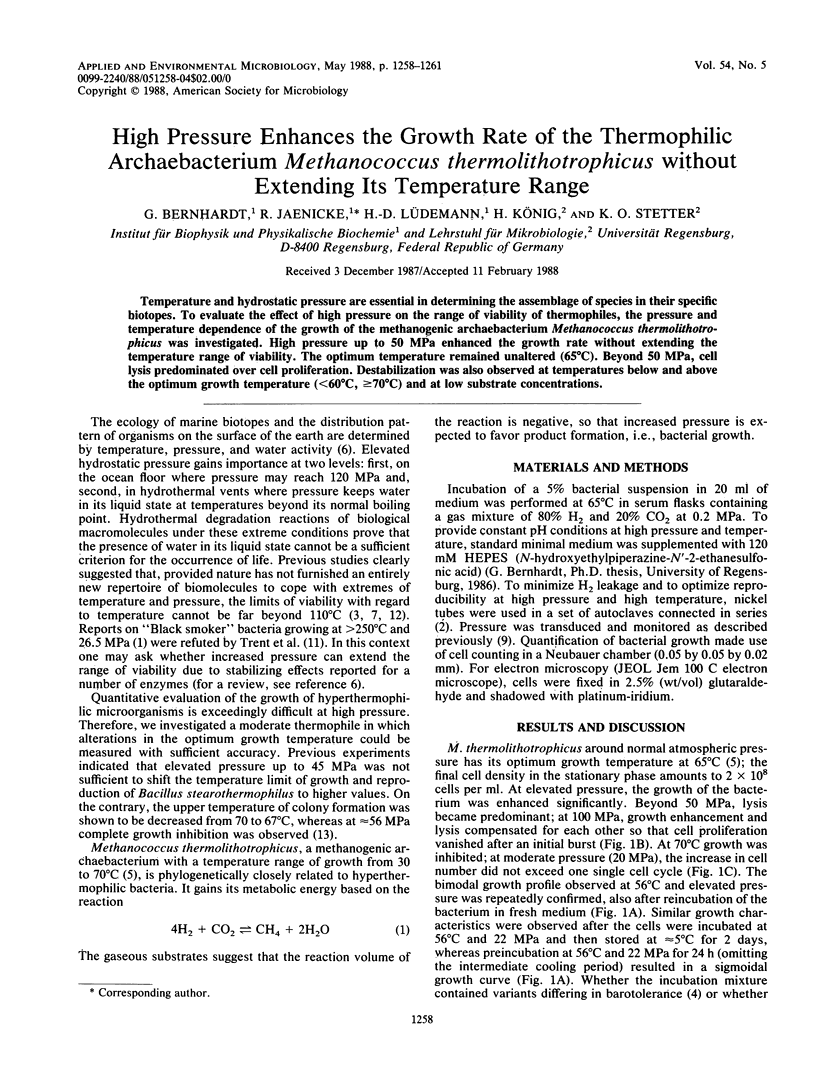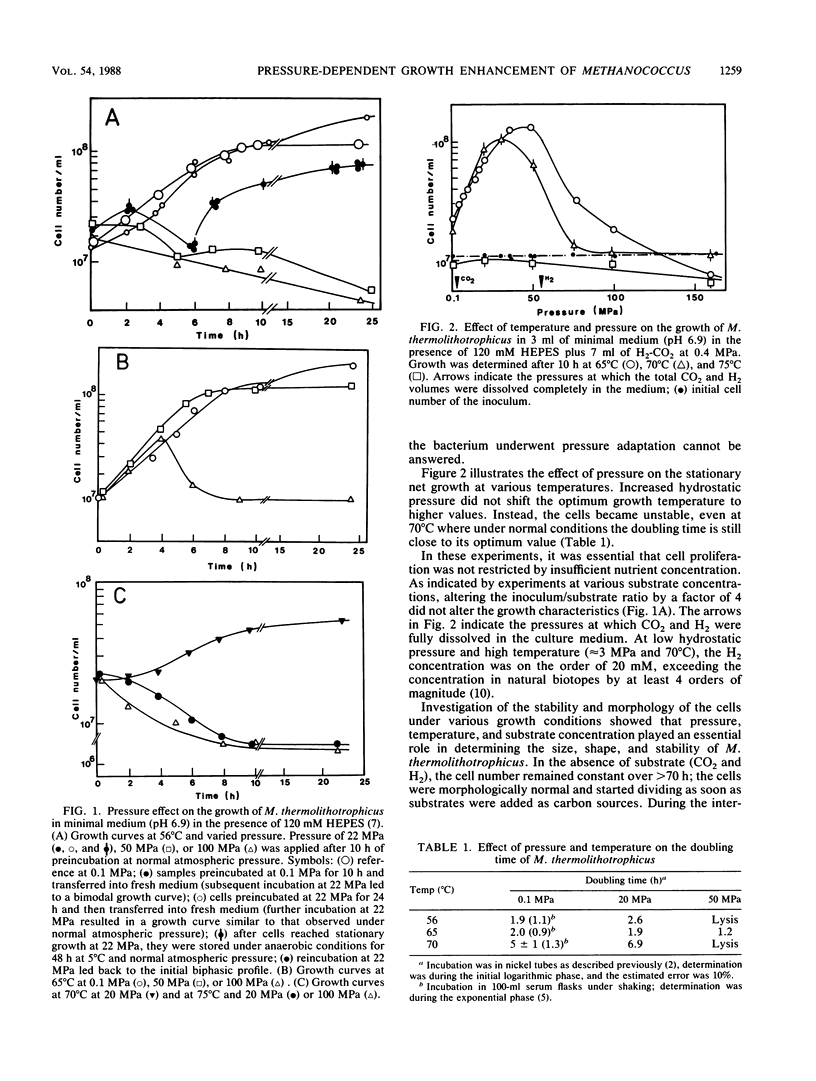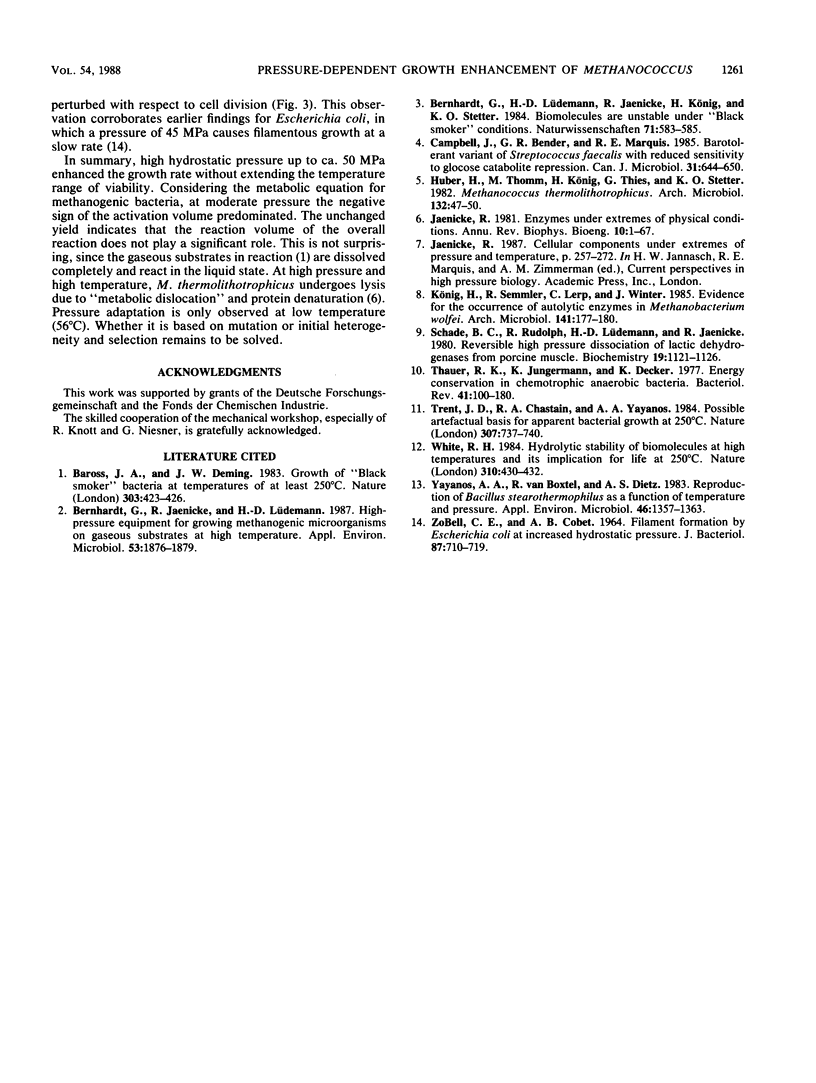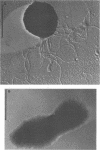Abstract
Temperature and hydrostatic pressure are essential in determining the assemblage of species in their specific biotopes. To evaluate the effect of high pressure on the range of viability of thermophiles, the pressure and temperature dependence of the growth of the methanogenic archaebacterium Methanococcus thermolithotrophicus was investigated. High pressure up to 50 MPa enhanced the growth rate without extending the temperature range of viability. The optimum temperature remained unaltered (65°C). Beyond 50 MPa, cell lysis predominated over cell proliferation. Destabilization was also observed at temperatures below and above the optimum growth temperature (<60°C, ≥70°C) and at low substrate concentrations.
Full text
PDF



Images in this article
Selected References
These references are in PubMed. This may not be the complete list of references from this article.
- Bernhardt G., Jaenicke R., Lüdemann H. D. High-pressure equipment for growing methanogenic microorganisms on gaseous substrates at high temperature. Appl Environ Microbiol. 1987 Aug;53(8):1876–1879. doi: 10.1128/aem.53.8.1876-1879.1987. [DOI] [PMC free article] [PubMed] [Google Scholar]
- Campbell J., 3rd, Bender G. R., Marquis R. E. Barotolerant variant of Streptococcus faecalis with reduced sensitivity to glucose catabolite repression. Can J Microbiol. 1985 Jul;31(7):644–650. doi: 10.1139/m85-121. [DOI] [PubMed] [Google Scholar]
- Jaenicke R. Enzymes under extremes of physical conditions. Annu Rev Biophys Bioeng. 1981;10:1–67. doi: 10.1146/annurev.bb.10.060181.000245. [DOI] [PubMed] [Google Scholar]
- Schade B. C., Rudolph R., Lüdemann H. D., Jaenicke R. Reversible high-pressure dissociation of lactic dehydrogenase from pig muscle. Biochemistry. 1980 Mar 18;19(6):1121–1126. doi: 10.1021/bi00547a013. [DOI] [PubMed] [Google Scholar]
- Thauer R. K., Jungermann K., Decker K. Energy conservation in chemotrophic anaerobic bacteria. Bacteriol Rev. 1977 Mar;41(1):100–180. doi: 10.1128/br.41.1.100-180.1977. [DOI] [PMC free article] [PubMed] [Google Scholar]
- Trent J. D., Chastain R. A., Yayanos A. A. Possible artefactual basis for apparent bacterial growth at 250 degrees C. Nature. 1984 Feb 23;307(5953):737–740. doi: 10.1038/307737a0. [DOI] [PubMed] [Google Scholar]
- White R. H. Hydrolytic stability of biomolecules at high temperatures and its implication for life at 250 degrees C. Nature. 1984 Aug 2;310(5976):430–432. doi: 10.1038/310430a0. [DOI] [PubMed] [Google Scholar]
- Yayanos A. A., Van Boxtel R., Dietz A. S. Reproduction of Bacillus stearothermophilus as a Function of Temperature and Pressure. Appl Environ Microbiol. 1983 Dec;46(6):1357–1363. doi: 10.1128/aem.46.6.1357-1363.1983. [DOI] [PMC free article] [PubMed] [Google Scholar]
- ZOBELL C. E., COBET A. B. FILAMENT FORMATION BY ESCHERICHIA COLI AT INCREASED HYDROSTATIC PRESSURES. J Bacteriol. 1964 Mar;87:710–719. doi: 10.1128/jb.87.3.710-719.1964. [DOI] [PMC free article] [PubMed] [Google Scholar]



